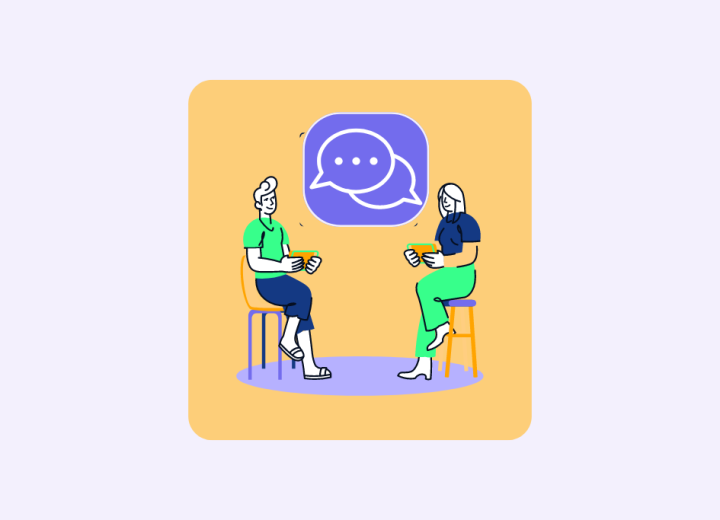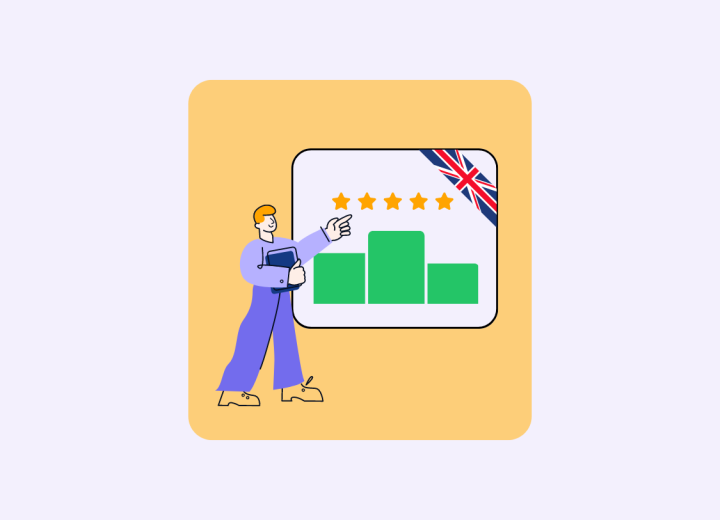The preparation for your case interview in management consulting requires a lot of work, diligence, perseverance, and discipline. It is not uncommon for many candidates to focus on the case interview itself, without keeping the behavioral interview in mind. Even if it makes up the smaller part of the interview, it is still equally important in the interviewer's decision as to your case-solving. Within this article, our case interview coach Clara gives you an introduction to the most common behavioral questions in the dimensions of leadership, entrepreneurial drive, and personal impact. Each section is accompanied by a list of possible behavioral questions, giving you tips and strategies to phrase interview answers that will blow the interviewer away.
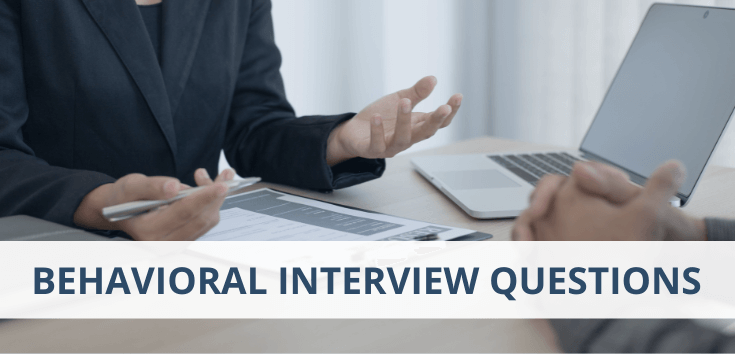
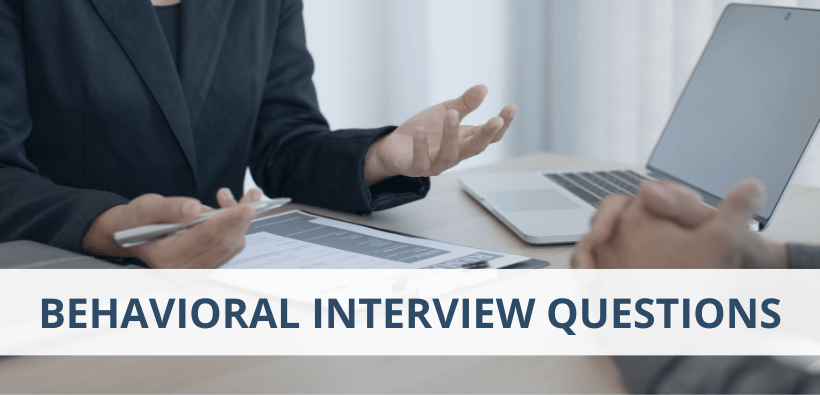
Behavioral Interviews – How You Should Prepare and Respond
In consulting interviews, candidates will usually face two or three on-site rounds of interviews with consultants. This series of 3 expert articles, focused on the preparation of the FIT part, will provide guidance to prepare the initial part of those in-person interviews –of which, normally, the initial 15` will be dedicated to FIT-.
These are the other articles of the series:
(1) Intro - and CV questions
(2) Motivational Fit Interview Questions
Although many candidates underestimate FIT and focus their preparation on business cases, FIT is as important to be prepared as business cases. In consulting interviews, FIT is an in-depth assessment of your skillset, not a standard motivational interview.
The importance of the FIT interview derives from the job description and required skillset of a consultant, not limited to analytical and problem-solving skills, but also encompassing team and client management abilities. This last two cannot be tested through business case, hence the importance of FIT.
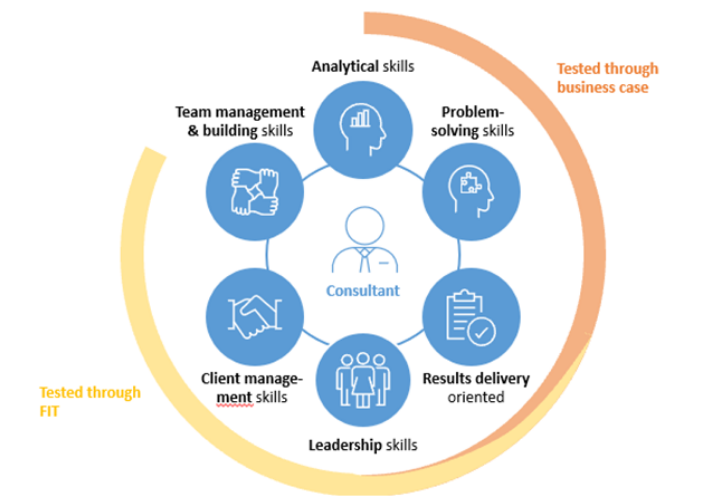
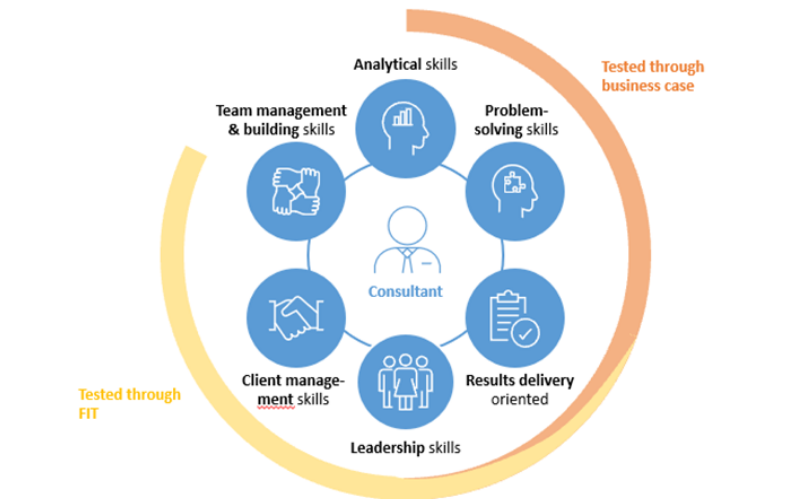
Behavioral questions are open questions to describe experiences and how you handled them. They are one of the 4 types of questions you can find in FIT interviews.
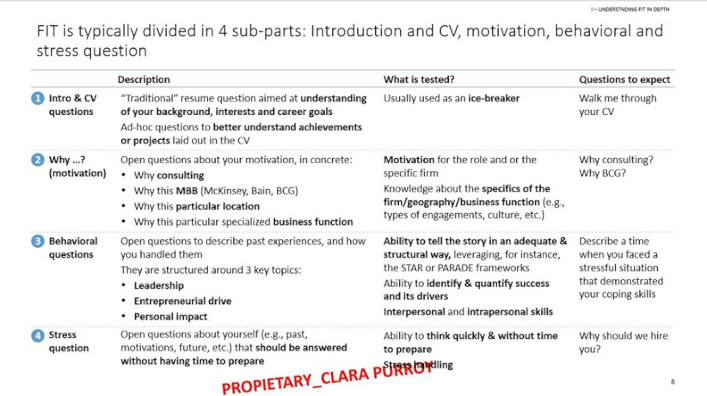
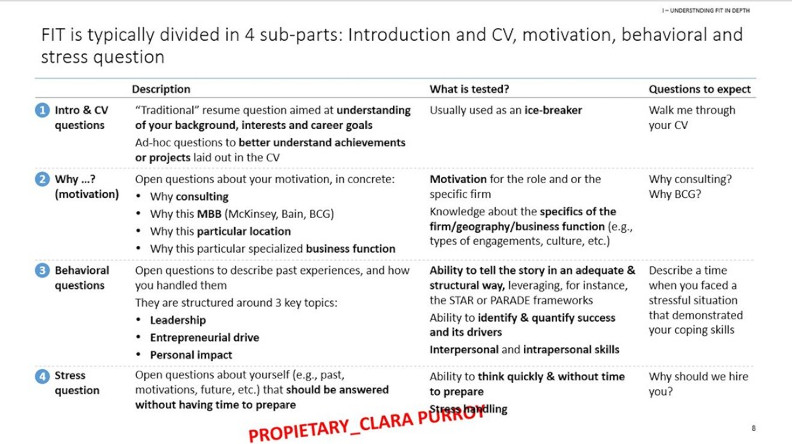
They are structured around 3 key topics:
- Leadership: “We seek people who strive to lead themselves, their teams, and their communities, and who can foster effective teamwork to drive results.”
- Entrepreneurial drive: “We look for people with an entrepreneurial spirit: innovative by nature, always creating new approaches, products, services, and technologies.”
- Personal impact: “Developing and implementing sound recommendations requires the involvement and support of many individuals. Skills interacting with people, sometimes in tough situations, are critical to driving distinctive client impact.”
2.1 What Is Tested with Behavioral Questions?
- Ability to tell the story in an adequate & structured way
- Ability to identify & quantify success and its drivers
- Interpersonal and intrapersonal skills
- FIT with the organization and its values
2.2 Which Communications Techniques Can Be Leveraged?
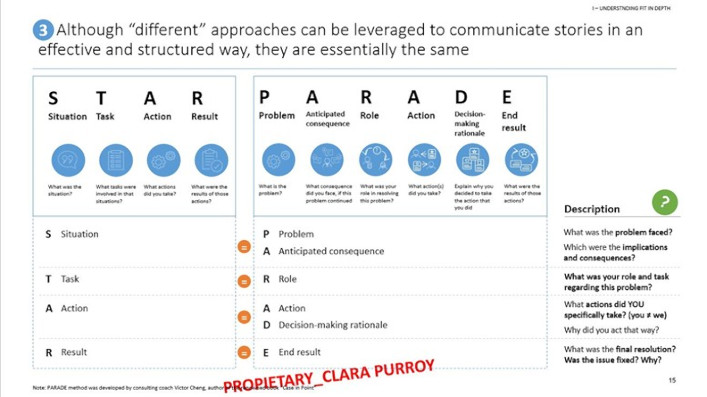
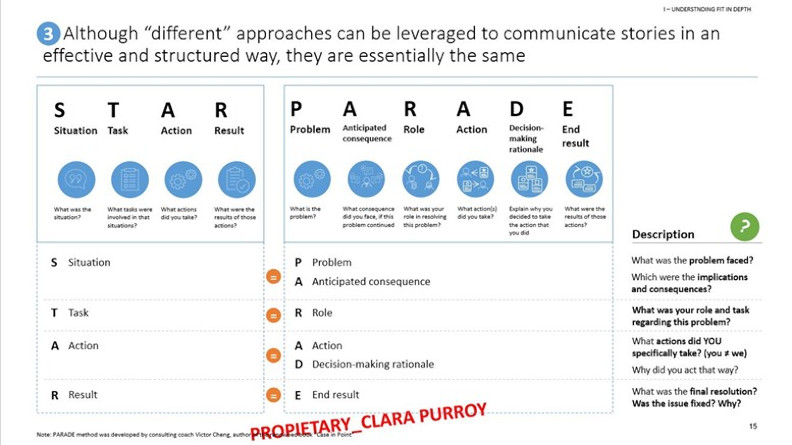
STAR or PARADE methodologies are “different” approaches/techniques that can be leveraged to communicate stories in an effective and structured way.
STAR stands for:
Situation→ Task → Action → Result.
PARADE is similar to that, just enhanced and modified with further aspects to have a look at:
Problem → Anticipated Consequence → Role → Action → Decision-Making Rationale → End Result
By using these communications techniques, you are able to structure your answer efficiently without wasting your time jumping from one thought to another. When using the STAR/PARADE methodology, you answer your interviewer’s question by starting with the problem you faced, as well as with the implications and consequences that followed along. After that, you describe your role and task regarding this problem. Most importantly, you will then describe the specific actions you took to solve the problem. Finally, in the last part of your answer, following those methodologies, you will come to the final resolution and should tell the interviewer if the problem at hand has been fixed or not, of course, accompanied by an explanation.
➥ Graphs from the Integrated FIT Guide for MBB
2.3 General Tips When Answering Behavioral Questions
- Be structured, following the STAR/PARADE methodology: Start with the problem and its consequences. This is followed by your role and the actions you personally took to solve the issue and lastly the result of your actions and if it has led to the desired outcome.
- Enrich the story with multiple data points, there are never too many!
- Numerical KPIs: Try to quantify your impact with relevant data points, as this will lead to a more valuable and tangible answer and your interviewer will be able to better follow your example.
- Non-numerical: Non-numerical data points are equally important to understand the story and impacts achieved.
Leadership is the first dimension we will deep dive into. Here are the top behavioral questions your interviewer is likely to ask when it comes to your leadership experience:
- Describe your most important leadership experience and impact that you had
- Describe a time when you faced with a stressful situation that demonstrated your coping skills
- Describe the best or worst manager you have ever worked for, and which were the leadership principles they presented
- Describe a time where you failed. What did you learn?
- Describe a time you suffered shortage of something that was critical for the project (e.g., time, team, experience, etc.) and how you fixed it
- Describe a time you accomplished something with limited resources
3.1 How to Respond to Behavioral Interview Questions in the Leadership Dimension
This section gives you insight into a possible leadership question during your behavioral interview, followed along by tips on how to answer it effectively. Keep in mind that the interviewer will have two major criteria in mind while listening to your answer:
- Can I work with this candidate closely in a team every day? (Even when doing 100h/week)
- Can I send the candidate to a client alone?
In the following, we will have a closer look at the following question:
Leadership – Example: “Tell me about a time you drove a group of people towards a common goal, overcoming obstacles and difficulties.”
Here is an example of how to answer the behavioral interview question above. The solution will show you that you will firstly introduce the interviewer to the situation and your team’s problem to overcome. After that, the solution shows you that you will have to deep dive into different dimensions like your role in the situation, the action you took as well as the final result and impact.
Problem and Situation:
During my last year at University, I was leading the org. team for a renowned national business case competition among +20 Spanish universities
Traditionally, the host University had covered for +80% of the cost. However, less than 12 months before the event, ours notified they could not cover any of the cost and only offer the facilities
In the +25 years of history of the competition, it had never been canceled or rescheduled, which would have been a terrible reputational grievance for the University and the org. team
Role:
As the leader of the org. team, it was my responsibility to find a solution on time
I was the only freshman student in the team, the rest (5 students) of them were younger and less experienced than me, with no background in business or events preparation
Action:
I analyzed the expense budget to quantify much we would have to raise to close the financing gap, arriving at €8,000
I looked at the amount donated by other public sponsors (e.g., the Ministry of Education), and while we had some material donations, the largest cash donation was only €500
I concluded that getting these public sponsors to increase their contribution on such short notice would be almost impossible, since their expense budgets were already approved.
Hence, I decided to look for alternative means of fundraising:
- Private sponsorship: divided into:
- Consulting companies: I approached both tier 1 and tier 2 companies, asking for donations in exchange for publicity
- Local SMEs whose owners were in the University's network, asking for donations in exchange for being able to pick some of the topics of the competition, that could later be leveraged by their business plans
- Participants crowdfunding: Given that there were more subscriptions than teams that could participate, I created a crowdfunding initiative to “earn” a spot in the competition. Like this, teams would defray their own expenses, which encompassed +20% of the total budget
Result and Impact:
We managed not only to cover the budget shortfall, but raise 100% of the initial estimated cost:
- Crowdfunding initiatives raised €2,000, as well as generating great free publicity. Furthermore, participant's satisfaction was highest among editions (NPS of 4.7 vs. 4.5 max), and most students indicated the previous crowdfunding activities as a great addition vs. previous years
- Consulting companies donated €7,000, as well as providing us with better branding and offering +25% of top participants job offers
- Local SMEs donated €2,000
Personally, it was a great leadership experience, not only facing a challenge against the clock but also having to coordinate a team towards a stretched goal. My key learning was the importance of understanding the motivations of each of the stakeholders (in this case, potential donors), to be able to bargain and offer something of their interests too.
Entrepreneurial drive is the second dimension in behavioral interviews that we will have a closer look at. The top questions that address this topic are:
-
Tell me about a time you had to adopt a new approach/think laterally about something.
-
Tell me about a situation where you made an important business decision without consulting your manager.
-
Tell me about a time you took the initiative to start something.
-
Tell me about a time in which you had to make a decision with high uncertainty or without the required data.
-
Tell me about a time when you needed a deeper level of subject expertise to do your job well/better.
-
Tell me about a time when you needed to take a calculated risk.
-
Tell me about a time in which you came up with a simple solution for a complex issue.
4.1 How to Respond to Behavioral Interview Questions in the Entrepreneurial Drive Dimension
This section will deep dive into a sample question related to entrepreneurial drive. We will, again, have a look at the question and then walk you through the answer based on the problem and situation, your role, your actions, and lastly the result and impact.
Entrepreneurial Drive – Example: “Tell me about a time you took the initiative to solve a problem that was not originally in your scope of work (could be in the context of a new venture or a new approach to a known problem).”
Problem and Situation:
I was a new hire in Amazon: barely 2 months tenure. Furthermore, my team was new - had only been launched in Sept that year - and we were 3 new joiners + 1 “tenured” employee + 1 manager
Black Friday week is a critical date for the year's performance, since up to ~25% of sales are achieved then - that was our first year existing as a business unit.
The more “tenured” team member was handling the BF week/campaign, and at the end of October announced he would leave the company in mid-November, just before the event
Role:
My defined role was “individual contributor” with very clear KPIs. Furthermore, I was (the whole team was) still in the 6 initial ramp-up months, during which I did not have to take any project on top of my core role
Hence, the problem seemed none's responsibility, but everybody's problem. Furthermore, I was the most senior among the 3 new joiners, and I felt I had to help the team by stepping up
Action:
I decided to step up and become the POC for the Black Friday event –although by then, I didn't even know what that meant, since I didn't know what needed to be done-.
Hence, 1st step was research got clarity on the overall goals and methodologies from other teams –both the European counterparts and the B2C teams in my own geography-. Thanks to their guidance and my constant shadowing of their work, I replicated the same “preparation” that other teams were doing, catching up with a job that should have been done weeks before
A key blocker was that we didn't have any dashboard to control real-time the performance of our deals during the week, which resulted in no visibility and would have made troubleshooting almost impossible
Since we didn't have time or BI (Business Intelligence) resources –they need to be pre-booked weeks in advance-, I leveraged an 80-20 approach built a dashboard without the needed SQL knowledge, by feeding an Excel model with account-by-account data extracted from the CRM manually at the end of each day (~1h manual work, shared among 3 people, not ideal but MVP and lean)
The dashboard would give us daily visibility, and the only problem I couldn't fix was the “data feeding” part (i.e., how the model inputs new data every day, that should have been done with an SQL query extracting the info directly from the data lake, but at that point, I lacked the knowledge for that). Hence, I went around it the only way I could: manually downloading every day the EOD reports on each account that was participating in the campaign and dumping that data as tabs in the model.
Result and Impact:
We had an impact at two levels, during and immediately after the event:
- The dashboard provided visibility on sales and warned us of issues that would have been impossible to detect (+200 ASINs listed from 20 different accounts), so we could react on a day-to-day basis and fix them. This was one of the contributing factors to us not only reaching sales and growth target but overachieving by 10% and 15% respectively
- Provided data for postmortem analysis that we would not have had otherwise.
Personally, it taught me a valuable lesson: Despite not having the right knowledge, data, or access to it, you can always do an MVP (minimum viable product) that covers basics needs, even if not perfect, and improve it over time.
The last dimension we will deep dive into is the dimension of personal impact. This dimension should demonstrate stakeholder management abilities by handling disagreement or conflict situations. Here are the top behavioral questions that address this topic:
-
Describe a time when you had to persuade an uncooperative stakeholder.
-
As a consultant in our team, how would you deal with an uncooperative client in order to get the data you need?
-
What is your way of dealing with conflict? Illustrate it with an example.
-
Describe a recent crisis you handled.
-
Describe a situation in which you influenced or persuaded a key stakeholder or group.
-
Tell me about a professional situation in which you impacted your peers.
-
Tell me about a situation that demonstrates you work well in a team environment.
-
Tell me about a time you had a professional disagreement with your manager. Who convinced who, and why?
-
Tell me about a time in which you needed to convince a key stakeholder of your point of view.
-
Tell me about a time you needed to drive change/an initiative that stakeholders did not like/approve.
-
Tell me about a time when you helped one of your team members develop their career/professional capabilities.
-
Tell me about a time when you went above and beyond for a client/similar.
-
Give me an example of a tough piece of feedback you received.
-
Tell me about a time in which you committed to a group decision even though you disagreed.
5.1 How to Respond to Behavioral Interview Questions in the Personal Impact Dimension
In this last deep dive, we will have a look at a sample behavioral question aiming at your personal impact. We will receive a sample answer that investigates the problem and situation, your role in the situation, the actions that have been taken as well as the final result and impact.
In the following, we will have a closer look at the following question:
Personal Impact – Behavioral Interview Example: “Tell me about a time you needed to convince a relevant stakeholder (manager, client, etc.) about a different approach.”
Problem and Situation:
I was a Business Analyst at McKinsey, in a team of 5 serving as a top Real Estate Developer in France.
The client's business model was based on standardization: they had very limited “prototypes of houses” and they built them in a standardized way, achieving synergies through consolidation and repetition.
Due to their business model, the Design-to-Value work stream was one of the key ones in McKinsey's engagement, centered in helping them identify which were the key features that clients valued most (e.g., what is more valuable for clients: to install a better floor made of natural wood or to have a common swimming pool in the community patio?)
Role:
As the leader of the Design-to-Value work stream, it was my responsibility to (1) conduct the market research needed and (2) conduct the analysis for quantifying and interpreting solutions.
Furthermore, it was fundamental for my work stream to be successful to have the clients on board, particularly two key stakeholders: the Director of Product –in charge of product definition-and the Director of Operations –in charge of costs-. They didn't get along with each other and had a department war.
Action:
Although the CEO was on board with the initial methodology proposed (a “conventional” survey to gather data on preferences about house features and finishing), when the engagement started we realized that the Product team had already conducted those types of analysis, which led to the initial prototype houses that our engagement was challenging since they were not well aligned with clients preferences, and they were expensive –hence, Product and Operations team were confronted-.
I realized that, by going with the classical survey approach, we would have very similar results to the ones the client already had, and furthermore would not solve the conflict between the client departments –that we clearly couldn't convince on the value proposition of our approach, as it was-.
I conducted thorough research (leveraging firm's resources and expert calls) about other marketing techniques, more refined than simple surveys, by contacting marketing experts specialized in industries where a higher level of expertise and sophistication were needed (e.g., CPG or automotive industry).
My conclusion was the suggestion of a new technique: conjoint -much more complex and expensive than a simple survey-. Thanks to a special questionnaire format based on trade-offs, it would reveal the utility of each housing feature (utility is a theoretical metric that reveals how much you care for something). Furthermore, if we went one step further and included the utility of money for our clients, we could compare both regressions and obtain the willingness to pay, a quantifiable and highly valuable metric for the Operations team
The team and I –as the main presenter-organized a workshop with senior management (C level) and directors of Product and Operations –the difficult stakeholders- to explain the new value proposition, and how it bridged both departments by combining product specifications and costs calculations
Result and Impact:
At the client level, the engagement was a great success:
- Obtained insights at a much more granular level –an aspect in which client had been skeptical-.
- Calculated for each element the willingness to pay, which made the exercise highly numerical and objective
- Built a model for decision-making comparing willingness to pay vs. cost, achieving a totally data-driven approach for features election
Personally, it was a great stakeholder management experience, not only facing a technically challenging methodology but also using it to bring together the two opposing departments. My key learning was how you can convince others of your point of view by leveraging data or expert calls, particularly when you are in front of “skeptical audiences”.
If you have come this far in the article, that’s great! You have already collected a lot of valuable information on how to crack a behavioral interview. For even more insights, you may also want to check out our free BootCamp article on the personal fit interview. If you still have questions after that, feel free to ask them in our Consulting Q&A, our experienced coaches are happy to share their personal experiences and have valuable tips for you at hand!
Your next step will be to take the theoretical knowledge you have gained and putting it into action! On PrepLounge, you can practice interviews with other case partners who cannot only test your case-solving skills, but also your performance in answering behavioral interview questions. Thus, make sure you propose a practice session on our Meeting Board to receive helpful feedback on your stories. Further, you can make use of our interactive Stress Question tool. Here, you can go through more than 110 possible questions that could come up during the personal fit part of your interview.
Finally, we would like to recommend Clara’s Integrated FIT Guide to you. It provides an end-to-end preparation for all three MBB interviews, as well as other consulting interviews, combining key concepts review and a hands-on methodology. Following the guide, you will prepare your stories by practicing with over 50 real questions and leveraging special frameworks and worksheets that guide you step-by-step. Finally, as further guidance, the guide encompasses over 20 examples from real candidates.
Make sure to give yourself the best FIT interview preparation and leave no stone unturned to land your dream job in management consulting. Do not wait and start directly with your preparation!
7. About the Author
McKinsey | Awarded professor at Master in Management @ IE | MBA at MIT |+180 students coached | Integrated FIT Guide author
- Professional Experience: Instituto de Empresa Business School, Amazon, McKinsey & Company
- Languages: English, French, Italian, Spanish
- Location: Spain
Clara started her career in McKinsey & Company, where she focused on Telco, Oil & Gas, and Real Estate. She later joined the team that launched Amazon Business in Spain, where she is nowadays in charge of several capability building and coaching programs for the Spanish Marketplace department.
Clara teaches “Data Insights and Visualization” in the Master in Management at Instituto de Empresa in Madrid, where she has received the Teaching Excellence Award, as the best-valued course by the students. She has also coached 150+ candidates on diverse platforms, such as PrepLounge. Furthermore, she is the founder and president of the NGO Building their Future since 2015, focused on educational projects in Nairobi, Kenya.
Continue to Learn

